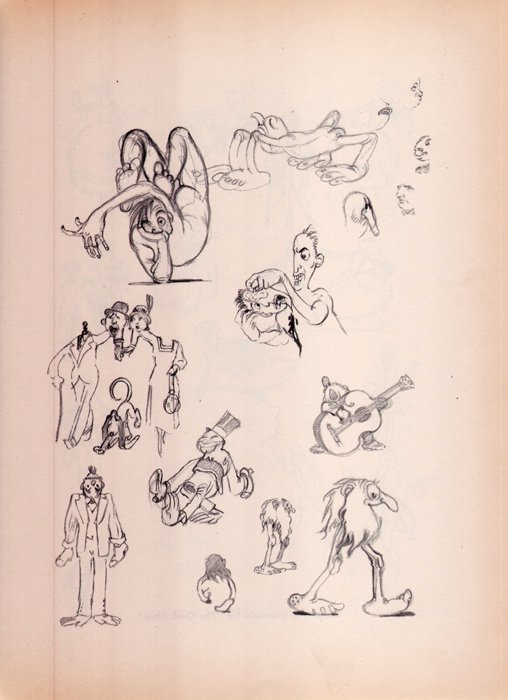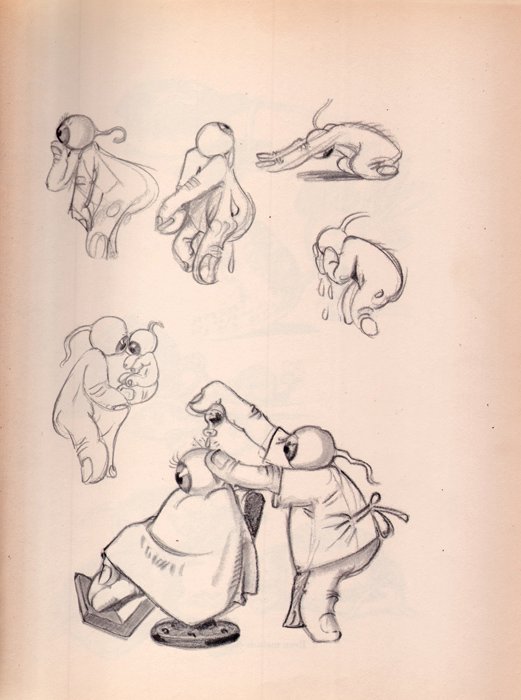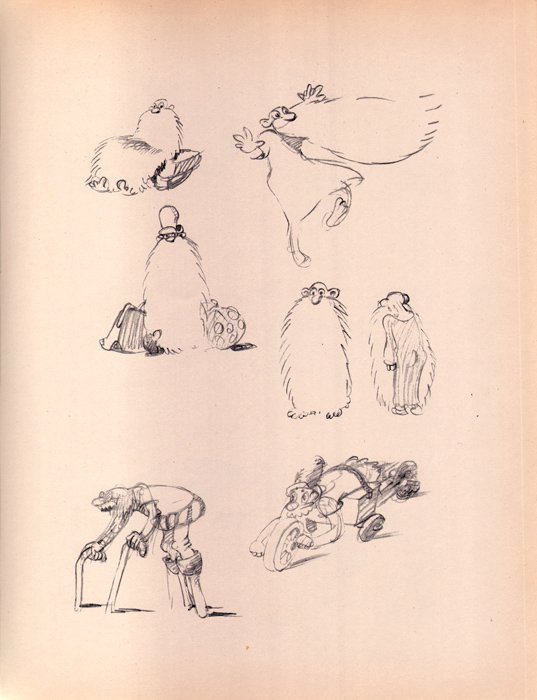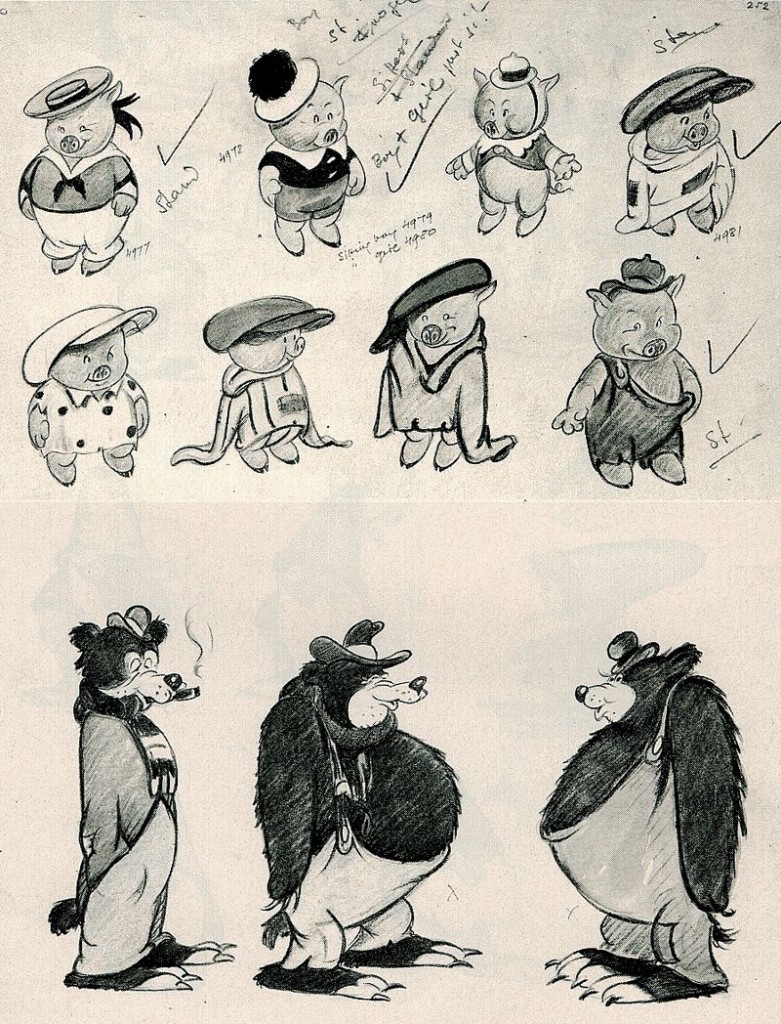Draw is it pleases you. Back to the hub of a massive American trash culture wheel….
Art Chantry (art@artchantry.com):
Southern California – especially Los Angeles – is the great under-rated stew pot of American popular culture. Sure, the folks who control the news media and publishing media tend to be based in new york city and therefore provincially center all culture of importance in their hometown. But, that just doesn’t hold up under closer examination. For the last century, LA is where it’s been at. Just about every major triumphant cultural reference point of any value to the popular culture seems to brewed in that sunlit neighborhood.
I know this is a grand and heretical statement to make. I don’t care. It’s just the facts as I have seem them emerge in my endless studies of graphic design. New York may be where the European influence is most felt in the design world. And it’s certainly where the corporate money dwells in the largest abundance. But, for your true pop movements and pop design language, LA is king. It just is.

---AC:the ideas of mr. disney are a long time ago. disney™ is a huge for-profit "at all costs" corporation now. anywhere they can make a buck, they will do so. they actually found a day care up here in seattle a while back that had disney characters painted on the wall on the INSIDE of the daycare. they sued for copyright infringement. so, the idea that disney's "the meter is running" corporate shysters wouldn't go after anybody publishing anything they had a taste of? well, good luck with that. corporate copyright protections (faked out as "protecting the artists") keeps getting pushed back almost exclusively for disney™ these days. they don't want mickey™ to go public domain. click image for more
For instance the impact of the surreal vision of Walt Disney studios. The movie industry is so powerful in forming our collective ideas about ourselves that we tend to ignore it as a pop culture design language source and tend to classify it as “culture itself” – as if cinema is some sort of REAL reflection of our actual lives. Even animation has jumped the shark into a shared reality looong before CG became the focal point of virtually EVERY advert in television.
When Disney studios decided to take the leap of faith into feature length animation, there were many many hurdles they needed to overcome. The histories tend to focus on the technical innovations, but the actual cultural experimentation and exploration gets a shorter shrift. I think that’s largely because they were such successful explorations that they became part of our “living dreamscape” of our reality. We can see the horizon over our own noses.
One of the truths behind Disney is that they, more than any other single source, introduced surrealism into the heart of American popular vision. Dancing and singing teapots and comedian mice as taken for granted and reality at this point in our dreams and lives. Many people actually think Mickey Mouse is a real person – just like most people have ‘learned’ that when shot with a gun, people simply fall cleanly to the ground and die peacefully – only to resurrect for another day (movie). Admit it, sometimes even YOU think that’s how it works.

AC: i can't help but look at this stuff and think 'von dutch flying eyeball' and so many other 'eyeball' images in the hot rod underground. coincidence? lord knows... click image for more
Disney studios also spent a LOT of time exploring consciousness and other altered states of reality to achieve their vision. Drug use was rampant in the early days. They didn’t have LSD or amphetamines, yet. But marijuana was very popular among their art staff and cocaine was also rumored (this may the source of the bizarre [but yet disproved] rumor of ‘uncle walter’s’ head being packed with cocaine and cryogenically preserved). There are photos of the art team bringing live animals into the studio to sketch. Some people have pointed out the possible joints in the ashtrays in the photos.
However, the main man at Disney, the guy who they turned to to get the REAL STUFF, was a quiet unassuming elder statesman of surreal dream cartooning. He was an eastern European gentleman named Albert Hurter. For instance, when creating th
aracters for their first feature film, “snow white & the seven dwarfs”, they gave on trying to concept the how the dwarfs should look and instead asked Hurter to do it. His sketches became the seven little ‘demons’. His sketches for Snow White also seem to have become the seminal starting point for that character as well.
Albert Hurter was actually one of several ‘concept sketcher’ guys employed by disney to act as sort of ‘idea specialists’. In hurter’s case, he seems to have kept to himself in a back office and just ‘draw crap’ all the time. His english was faltering and he was very mannered and ‘proper’ in old European ways. He lived very frugally and couldn’t even drive a car (later, when his loving and devoted co-workers gave him a car as a gift, he fell in love with long drives and became addicted to endless cross country trips. he was also a terrible driver).

AC:the way the law works is that if you work for a company, they own your work. i doubt you can sign an employment contract in america today and have otherwise. even freelance contracts contain the phrase 'work for hire' . that takes away your rights completely and utterly. period. in fact , the guy who invented post-it notes worked for ibm, but developed the post-its at home in his basement on his spare time. the company took it from him and ran with it. that's how it works - whomever's name is on the door owns the employees work. period. disney owns this hurter material. no court in the land would say otherwise. click image for more
Hurter was the mad uncle in the attic. He sketched anything and everything, often just following his whims. He was much older than the youngsters on staff and they all marveled at his classic drawing skills. But, hurter also worked in a cartoon style that could only be called ‘surreal’. His thinking was so deeply and disturbingly outside any known box that his work was virtually unusable except as inspiration for the more conservative concepts controlled by Disney himself. His work was so powerful and inventive that he seems to be THE major creative visual force responsible for the studio ‘look’, second only to Walt Disney himself.
Eventually, being older, he took sick and then quietly died. As a tribute to his memory, his co-workers gathered together a selection of images (pages, actually) from his sketchbooks and published them posthumously as a book/tribute to his genius and their affection for him. It seems to have been an extremely small private printing and was apparently only distributed among staff. It’s subsequent history seems to be one of corporate disapproval. At least it never really saw any publication outside of the initial printing.
The book, “albert hurter: he drew as he pleased” is a very rare and expensive book to now collect. Illustrator Scott Mcdougall somehow found a copy and showed it to me. I immediately photocopied the whole thing. It blew me away. That started a two decade long search to find a copy (affordably). I finally gave up and spent a large dollar amount to finally get a copy of the thing.
One of the things that strikes me about Hurter’s work is how many now familiar and iconic images exist in his sketches in this little book. I assume that this book MUST have drifted through the Los Angeles creative community for some time. There is no way that this stuff did not pass the eyes of some of the underground ‘geniuses’ that later became the lions of the new outsider underground world. Being an industry town (the movies in LA), copies of this book were seem and emulated – just like the Disney crew payed him him to do, to sketch and inspire.

---He died of a weak heart caused by rheumatic heart disease in 1942. He'd suffered from rheumatic fever as a child and a weak heart all his life. In his will, he arranged for the publication of a book on his work. "Arranged and captioned" by fellow Disney worker Ted Sears, He Drew As He Pleased features over 700 of Hurter's amazing doodles and drawings. The ideas they sparked are both obvious and subtle, and gags based on them often appeared in films other than the ones for which they were originally concocted. Canemaker's book is the source for the startling fact that it was financed by Hurter. We'd always thought it was a tribute by Disney and/or his co-workers.--- click image for more
Why do I point this out? well, Von Dutch MUST HAVE seen this book. Robert Crumb MUST HAVE seen this book. Roger Corman MUST HAVE seen this book. There are just too many iconographic images later popularized by underground superstars. This book is probably one of the most single influential compilations in the history of subcultural america. And it only seems to have drifted through LA.
I know, I know. these are really big claims to make. but, when you research the history of this Albert Hurter person and look at the contents of this book, and trace the path of the language and icons presented it leaves you with some questions. This is my answer: this was a hugely influential volume. It was seen and emulated by scores of creative nutjobs who later became iconographic inspirations for American pop culture language. And this festering process must have only happened exclusively in Los Angeles, the hub of a massive american trash culture wheel slowly turning the rest of the world. Go figger.










 COMMENTS
COMMENTS



